by Joanne Ivancic* (Advanced Biofuels USA) EnergyPath. It’s like nothing else. Funded by a lawsuit settlement more than a decade ago, EnergyPath has become the region’s largest sustainable energy event, attracting industry professionals, policymakers, and academia from across the United States.
Scholarships enable people with a wide range of interests and ages to participate, meeting the Sustainable Energy Fund’s goal to increase the knowledge of and passion for sustainable energy in the leaders of today and tomorrow. Including, this year, a number of people transitioning from careers in fossil fuel energy.
EnergyCamp
It starts with three days of EnergyCamp with opportunities for hands-on experiences such as installing solar panels, in addition to classroom activities.
And, as in the case of Advanced Biofuels USA’s Wednesday exhibit, a chance to put your head under the hood of a 2002 car to learn how it was converted to use E85.
 Blender pump showing price comparison of E85, comparable 93 octane, E15 and 87 octane regular fuels. (Click to enlarge)
Blender pump showing price comparison of E85, comparable 93 octane, E15 and 87 octane regular fuels. (Click to enlarge)
I think almost everyone attending stopped by to take a look and many stayed for in-depth conversations about
- how the conversion was done,
- observed improved performance,
- mileage differences with greater that E40/E50 blends,
- the importance of the octane characteristics of high ethanol blends,
- the difference between biodiesel and ethanol and between compression engines and spark-ignition systems,
- the solvent properties of ethanol and need to change fuel filters if using high ethanol blends after years of zero or low ethanol fuels,
- the difference between the price of 87 octane regular, E15 (blue in photo), high octane E85 (yellow in photo) and comparable 93 octane premium at a Harrisburg-area Sheetz that day (with E85 $1.00 less than comparable premium),
- where they could buy this fuel for their cars (we had a computer handy to look up E85 and E15 locations near their homes),
- and much more.
With storms raging through the mountains to the east and west of DeSales University where EnergyPath took place, but never shutting us down, this outdoor exhibit proved quite successful. Thanks again to the folks at Fuel Flex International for donating the conversion kit as their way to support our flex fuel educational efforts.
EnergyPath Conference Program
After EnergyCamp comes a day of concurrent sessions by experts, plenary sessions, and an awards dinner with keynote speakers. Break-out lectures included topics from “Advanced Biofuels: Transportation, Cooking and Energy Storage,” which I presented, to “Solar Photovoltaics 101,” “Deploying Energy Storage: Economics, Regulations and Technology” and Combining Technology, Beauty and Meaning in the New SEF Net Zero Office Building” or “Small Wind Mythbusting: What You Need to Know Before Buying a Small Wind Turbine” and “Moving EV’s to Mass Deployment.”
In other words, this event is not just for C-level renewable energy leaders, or dedicated to financing big projects. It’s renewable energy in all its forms where the rubber meets the road or the electrons meet the extension cord.
As they say, EnergyPath has something for everyone. For those who want to learn more about renewable energy, for business owners who would benefit from learning energy efficiency techniques to save money on energy bills, for those looking to start an energy business or start a career in the energy industry or looking to give new hires a crash course in sustainable energy. As one attendee said, “It is like attending a mini-college course in energy effectiveness."
In past years, I met people from around the world. One year an Advanced Biofuels USA student intern from Nigeria received a scholarship to attend for the week. He couldn’t say enough about the value of the experience.
Expo and Science Fair
On Thursday, along with the concurrent sessions, the venue is bustling with an Expo area with information booths from nonprofit organizations, universities, energy companies, energy service providers, utility representatives, solar and lighting equipment and supplies, government agencies and a science fair for high school and middle school competitors with cash prizes.
With interested attendees coming to the Expo throughout the event, we got to talk with people with a wide variety of motivations for being a part of this event.
We shared educational resources with faculty from regional universities and with K-12 teachers.
We were happy to talk with a number of people leaving the fossil energy industry who were looking to continue their careers in renewable energy. We were happy to talk with them about renewable liquid fuels.
Students, home-owners, business professionals and families of science fair contestants stopped by, all interested in how to lower their carbon footprints and considering biofuels as an option.
Located as part of the Expo, the science fair competitors also fielded questions through the day. Awards were presented at an evening dinner.
High School Division Middle School Division
1st Place – $1250 1st Place – $1250
2nd Place – $750 2nd Place – $750
3rd Place – $250 3rd Place – $250
The winners of the EnergyPath 2018 science fair and the names of their projects:
Middle School
1st place: Marjorie Romero, Wilson Southern Middle School, “Stepp N’Save”
2nd place: Cody McBride, McBride Homeschool, “Revolutionizing Dryer Technology with Piezoelectric Transducers”
3rd place: Susan Deering, Avon Grove Charter School, “Hydroelectricity from the Sky”
High School
1st place: Sathya Edamadaka, High Technology High School, “RMPC: A Novel Cost-Effective Approach to Raising Photovoltaic Efficiency Through Turnable Plasmonic Nanostructures”
2nd place: April Pivonka, Camp Hill High School, “Optimizing Hydroponic Plant Growth and Energy Usage with LED Spectral Manipulation”
3rd place: Katherine Comisac, Susquenita High School, “Stepping into the Future: Piezoelectricity in Action”
Although there were no biofuels-related participants, Anya Damdin of Northside Elementary got close, bringing her “From Trash to Gas: Biomass Energy” experiment. She wondered if organic biomass might make more biogas when decomposing than nonorganic biomass. Using examples of both types of food waste examples in bananas, potato peels and carrot peels, and using cow manure collected at a relative’s farm for a common source of microbes to break down the materials, she determined that there really wasn’t much difference.
And so it goes with scientific inquiry. She still learned a lot about designing and executing an experiment; and about describing her work to judges and to the attendees who toured the science fair exhibits with poise and confidence. She was also able to talk to exhibitors who were experts in biogas as a source of renewable energy for power, heat and transportation. She gathered additional information about biogas and renewable natural gas (RNG) and, along with her family, was able to see her experiment in the larger world context. Not all benefits of such an experience can be monetized.
A Model
Every region, every country, should look at the Sustainable Energy Fund’s EnergyPath camp, conference, expo and science fair as a model to expand real-life, realistic understanding and use of renewable, sustainable energy sources. It is certainly a lot of work, but the results could exceed expectations.
*Joanne Ivancic serves as executive director of Advanced Biofuels USA.
Photos by JIvancic except ** by BEgolf-Fox
Nearly 55,000 articles in our online library!
Use the categories and tags listed below to access the nearly 50,000 articles indexed on this website.
Advanced Biofuels USA Policy Statements and Handouts!
- For Kids: Carbon Cycle Puzzle Page
- Why Ethanol? Why E85?
- Just A Minute 3-5 Minute Educational Videos
- 30/30 Online Presentations
- “Disappearing” Carbon Tax for Non-Renewable Fuels
- What’s the Difference between Biodiesel and Renewable (Green) Diesel? 2020 revision
- How to De-Fossilize Your Fleet: Suggestions for Fleet Managers Working on Sustainability Programs
- New Engine Technologies Could Produce Similar Mileage for All Ethanol Fuel Mixtures
- Action Plan for a Sustainable Advanced Biofuel Economy
- The Interaction of the Clean Air Act, California’s CAA Waiver, Corporate Average Fuel Economy Standards, Renewable Fuel Standards and California’s Low Carbon Fuel Standard
- Latest Data on Fuel Mileage and GHG Benefits of E30
- What Can I Do?
Donate
DonateARCHIVES
- July 2025
- June 2025
- May 2025
- April 2025
- March 2025
- February 2025
- January 2025
- December 2024
- November 2024
- October 2024
- September 2024
- August 2024
- July 2024
- June 2024
- May 2024
- April 2024
- March 2024
- February 2024
- January 2024
- December 2023
- November 2023
- October 2023
- September 2023
- August 2023
- July 2023
- June 2023
- May 2023
- April 2023
- March 2023
- February 2023
- January 2023
- December 2022
- November 2022
- October 2022
- September 2022
- August 2022
- July 2022
- June 2022
- May 2022
- April 2022
- March 2022
- February 2022
- January 2022
- December 2021
- November 2021
- October 2021
- September 2021
- August 2021
- July 2021
- June 2021
- May 2021
- April 2021
- March 2021
- February 2021
- January 2021
- December 2020
- November 2020
- October 2020
- September 2020
- August 2020
- July 2020
- June 2020
- May 2020
- April 2020
- March 2020
- February 2020
- January 2020
- December 2019
- November 2019
- October 2019
- September 2019
- August 2019
- July 2019
- June 2019
- May 2019
- April 2019
- March 2019
- February 2019
- January 2019
- December 2018
- November 2018
- October 2018
- September 2018
- August 2018
- July 2018
- June 2018
- May 2018
- April 2018
- March 2018
- February 2018
- January 2018
- December 2017
- November 2017
- October 2017
- September 2017
- August 2017
- July 2017
- June 2017
- May 2017
- April 2017
- March 2017
- February 2017
- January 2017
- December 2016
- November 2016
- October 2016
- September 2016
- August 2016
- July 2016
- June 2016
- May 2016
- April 2016
- March 2016
- February 2016
- January 2016
- December 2015
- November 2015
- October 2015
- September 2015
- August 2015
- July 2015
- June 2015
- May 2015
- April 2015
- March 2015
- February 2015
- January 2015
- December 2014
- November 2014
- October 2014
- September 2014
- August 2014
- July 2014
- June 2014
- May 2014
- April 2014
- March 2014
- February 2014
- January 2014
- December 2013
- November 2013
- October 2013
- September 2013
- August 2013
- July 2013
- June 2013
- May 2013
- April 2013
- March 2013
- February 2013
- January 2013
- December 2012
- November 2012
- October 2012
- September 2012
- August 2012
- July 2012
- June 2012
- May 2012
- April 2012
- March 2012
- February 2012
- January 2012
- December 2011
- November 2011
- October 2011
- September 2011
- August 2011
- July 2011
- June 2011
- May 2011
- April 2011
- March 2011
- February 2011
- January 2011
- December 2010
- November 2010
- October 2010
- September 2010
- August 2010
- July 2010
- June 2010
- May 2010
- April 2010
- March 2010
- February 2010
- January 2010
- December 2009
- November 2009
- October 2009
- September 2009
- August 2009
- July 2009
- June 2009
- May 2009
- April 2009
- March 2009
- February 2009
- January 2009
- December 2008
- November 2008
- October 2008
- September 2008
- August 2008
- July 2008
- June 2008
- May 2008
- April 2008
- March 2008
- February 2008
- January 2008
- December 2007
- November 2007
- October 2007
- September 2007
- August 2007
- June 2007
- February 2007
- January 2007
- October 2006
- April 2006
- January 2006
- April 2005
- December 2004
- November 2004
- December 1987
CATEGORIES
- About Us
- Advanced Biofuels Call to Action
- Aviation Fuel/Sustainable Aviation Fuel (SAF)
- BioChemicals/Renewable Chemicals
- BioRefineries/Renewable Fuel Production
- Business News/Analysis
- Cooking Fuel
- Education
- 30/30 Online Presentations
- Competitions, Contests
- Earth Day 2021
- Earth Day 2022
- Earth Day 2023
- Earth Day 2024
- Earth Day 2025
- Executive Training
- Featured Study Programs
- Instagram TikTok Short Videos
- Internships
- Just a Minute
- K-12 Activities
- Mechanics training
- Online Courses
- Podcasts
- Scholarships/Fellowships
- Teacher Resources
- Technical Training
- Technician Training
- University/College Programs
- Events
- Coming Events
- Completed Events
- More Coming Events
- Requests for Speakers, Presentations, Posters
- Requests for Speakers, Presentations, Posters Completed
- Webinars/Online
- Webinars/Online Completed; often available on-demand
- Federal Agency/Executive Branch
- Agency for International Development (USAID)
- Agriculture (USDA)
- Commerce Department
- Commodity Futures Trading Commission
- Congressional Budget Office
- Defense (DOD)
- Air Force
- Army
- DARPA (Defense Advance Research Projects Agency)
- Defense Logistics Agency
- Marines
- Navy
- Education Department
- Energy (DOE)
- Environmental Protection Agency
- Federal Energy Regulatory Commission (FERC)
- Federal Reserve System
- Federal Trade Commission
- Food and Drug Administration
- General Services Administration
- Government Accountability Office (GAO)
- Health and Human Services (HHS)
- Homeland Security
- Housing and Urban Development (HUD)
- Interior Department
- International Trade Commission
- Joint Office of Energy and Transportation
- Justice (DOJ)
- Labor Department
- National Academies of Sciences Engineering Medicine
- National Aeronautics and Space Administration
- National Oceanic and Atmospheric Administration
- National Research Council
- National Science Foundation
- National Transportation Safety Board (NTSB)
- Occupational Safety and Health Administration
- Overseas Private Investment Corporation
- Patent and Trademark Office
- Securities and Exchange Commission
- State Department
- Surface Transportation Board
- Transportation (DOT)
- Federal Aviation Administration
- National Highway Traffic Safety Administration (NHTSA)
- Pipeline and Hazardous Materials Safety Admin (PHMSA)
- Treasury Department
- U.S. Trade Representative (USTR)
- White House
- Federal Legislation
- Federal Litigation
- Federal Regulation
- Feedstocks
- Agriculture/Food Processing Residues nonfield crop
- Alcohol/Ethanol/Isobutanol
- Algae/Other Aquatic Organisms/Seaweed
- Atmosphere
- Carbon Dioxide (CO2)
- Field/Orchard/Plantation Crops/Residues
- Forestry/Wood/Residues/Waste
- hydrogen
- Manure
- Methane/Biogas
- methanol/bio-/renewable methanol
- Not Agriculture
- RFNBO (Renewable Fuels of Non-Biological Origin)
- Seawater
- Sugars
- water
- Funding/Financing/Investing
- grants
- Green Jobs
- Green Racing
- Health Concerns/Benefits
- Heating Oil/Fuel
- History of Advanced Biofuels
- Infrastructure
- Aggregation
- Biofuels Engine Design
- Biorefinery/Fuel Production Infrastructure
- Carbon Capture/Storage/Use
- certification
- Deliver Dispense
- Farming/Growing
- Precursors/Biointermediates
- Preprocessing
- Pretreatment
- Terminals Transport Pipelines
- International
- Abu Dhabi
- Afghanistan
- Africa
- Albania
- Algeria
- Angola
- Antarctica
- Arctic
- Argentina
- Armenia
- Aruba
- Asia
- Asia Pacific
- Australia
- Austria
- Azerbaijan
- Bahamas
- Bahrain
- Bangladesh
- Barbados
- Belarus
- Belgium
- Belize
- Benin
- Bermuda
- Bhutan
- Bolivia
- Bosnia and Herzegovina
- Botswana
- Brazil
- Brunei
- Bulgaria
- Burkina Faso
- Burundi
- Cambodia
- Cameroon
- Canada
- Caribbean
- Central African Republic
- Central America
- Chad
- Chile
- China
- Colombia
- Congo
- Congo, Democratic Republic of
- Costa Rica
- Croatia
- Cuba
- Cyprus
- Czech Republic
- Denmark
- Dominican Republic
- Dubai
- Ecuador
- El Salvador
- Equatorial Guinea
- Eqypt
- Estonia
- Eswatini/Swaziland
- Ethiopia
- European Union (EU)
- Fiji
- Finland
- France
- French Guiana
- Gabon
- Georgia
- Germany
- Ghana
- Global South
- Greece
- Greenland
- Grenada
- Guatemala
- Guinea
- Guyana
- Haiti
- Honduras
- Hong Kong
- Hungary
- Iceland
- India
- Indonesia
- Iran
- Iraq
- Ireland
- Israel
- Italy
- Ivory Coast
- Jamaica
- Japan
- Jersey
- Jordan
- Kazakhstan
- Kenya
- Korea
- Kosovo
- Kuwait
- Laos
- Latin America
- Latvia
- Lebanon
- Liberia
- Lithuania
- Luxembourg
- Macedonia
- Madagascar
- Malawi
- Malaysia
- Maldives
- Mali
- Malta
- Marshall Islands
- Mauritania
- Mauritius
- Mexico
- Middle East
- Moldova
- Monaco
- Mongolia
- Morocco
- Mozambique
- Myanmar/Burma
- Namibia
- Nepal
- Netherlands
- New Guinea
- New Zealand
- Nicaragua
- Niger
- Nigeria
- North Africa
- North America
- North Korea
- Northern Ireland
- Norway
- Oman
- Pakistan
- Panama
- Papua New Guinea
- Paraguay
- Peru
- Philippines
- Poland
- Portugal
- Qatar
- Republic of
- Romania
- Russia
- Rwanda
- Saudi Arabia
- Scotland
- Senegal
- Serbia
- Sierra Leone
- Singapore
- Slovakia
- Slovenia
- Solomon Islands
- South Africa
- South America
- South Korea
- South Sudan
- Southeast Asia
- Spain
- Sri Lanka
- Sudan
- Suriname
- Sweden
- Switzerland
- Taiwan
- Tanzania
- Thailand
- Timor-Leste
- Togo
- Trinidad and Tobago
- Tunisia
- Turkey
- Uganda
- UK (United Kingdom)
- Ukraine
- United Arab Emirates UAE
- Uruguay
- Uzbekistan
- Vatican
- Venezuela
- Vietnam
- Wales
- Zambia
- Zanzibar
- Zimbabwe
- Marine/Boat Bio and Renewable Fuel/MGO/MDO/SMF
- Marketing/Market Forces and Sales
- Opinions
- Organizations
- Original Writing, Opinions Advanced Biofuels USA
- Policy
- Presentations
- Biofuels Digest Conferences
- DOE Conferences
- Bioeconomy 2017
- Bioenergy2015
- Biomass2008
- Biomass2009
- Biomass2010
- Biomass2011
- Biomass2012
- Biomass2013
- Biomass2014
- DOE Project Peer Review
- Other Conferences/Events
- R & D Focus
- Carbon Capture/Storage/Use
- Co-Products
- Feedstock
- Logistics
- Performance
- Process
- Vehicle/Engine/Motor/Aircraft/Boiler
- Yeast
- Railroad/Train/Locomotive Fuel
- Resources
- Books Web Sites etc
- Business
- Definition of Advanced Biofuels
- Find Stuff
- Government Resources
- Scientific Resources
- Technical Resources
- Tools/Decision-Making
- Rocket/Missile Fuel
- Sponsors
- States
- Alabama
- Alaska
- Arizona
- Arkansas
- California
- Colorado
- Connecticut
- Delaware
- Florida
- Georgia
- Hawai'i
- Idaho
- Illinois
- Indiana
- Iowa
- Kansas
- Kentucky
- Louisiana
- Maine
- Maryland
- Massachusetts
- Michigan
- Midwest
- Minnesota
- Mississippi
- Missouri
- Montana
- Native American tribal nation lands
- Nebraska
- Nevada
- New Hampshire
- New Jersey
- New Mexico
- New York
- North Carolina
- North Dakota
- Ohio
- Oklahoma
- Oregon
- Pennsylvania
- Puerto Rico
- Rhode Island
- South Carolina
- South Dakota
- Tennessee
- Texas
- Utah
- Vermont
- Virginia
- Washington
- Washington DC
- West Coast
- West Virginia
- Wisconsin
- Wyoming
- Sustainability
- Uncategorized
- What You Can Do
tags
© 2008-2023 Copyright Advanced BioFuels USA. All Rights reserved.
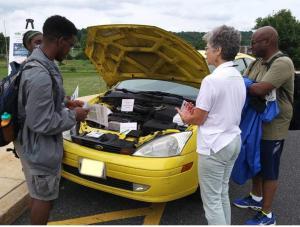
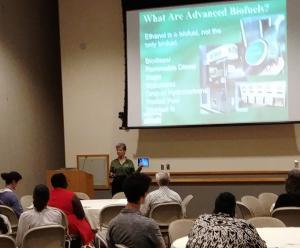
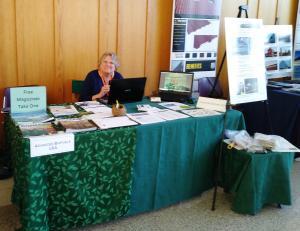
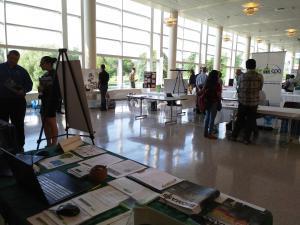
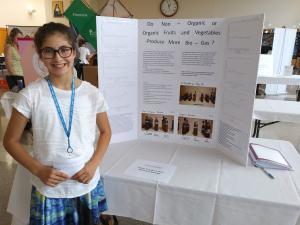
.jpg)





0 COMMENTS
Leave A Comment
Your Email Address wiil not be Published. Required Field Are marked*